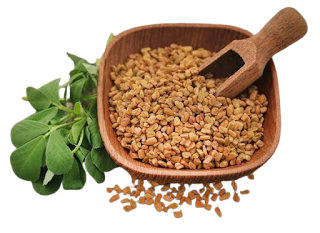Incorporating leafy greens into your diet can significantly boost your overall health. Here are five nutrient-packed leafy greens to consider:
.png) |
Spinach |
1. Spinach
Health Benefits:
- Rich in Nutrients: High in vitamins A, C, K, and folate, as well as iron and magnesium.
- Antioxidant Properties: Contains powerful antioxidants that protect your cells from damage.
- Bone Health: The high vitamin K content helps in bone metabolism and maintaining bone density.
Ways to Eat:
- Add fresh spinach to salads, smoothies, and sandwiches.
- Sauté with garlic as a side dish.
- Include in soups, stews, and omelets.
2. Kale
Health Benefits:
- Nutrient-Dense: Packed with vitamins A, C, K, and B6, as well as calcium, potassium, and magnesium.
- Antioxidant-Rich: Contains quercetin and kaempferol, which have anti-inflammatory and heart-protective effects.
- Fiber-Rich: Supports digestive health and helps regulate blood sugar levels.
Ways to Eat:
- Use in salads, massaged with a bit of olive oil and lemon juice.
- Blend into smoothies for an extra nutrient boost.
- Bake as kale chips for a healthy snack.
3. Swiss Chard
Health Benefits:
- Vitamin Powerhouse: High in vitamins K, A, C, and E, as well as magnesium and potassium.
- Heart Health: Magnesium and potassium help regulate blood pressure and support heart health.
- Anti-Inflammatory: Contains betalains, which have anti-inflammatory properties.
Ways to Eat:
- Sauté with garlic and olive oil as a side dish.
- Add to soups, stews, and casseroles.
- Use the leaves as wraps for a nutritious alternative to tortillas.
4. Arugula
Health Benefits:
- Nutrient-Rich: Contains vitamins A, C, K, and folate, as well as calcium and potassium.
- Bone Health: High calcium content supports bone health.
- Digestive Health: Contains fiber that aids in digestion.
Ways to Eat:
- Add to salads for a peppery flavor.
- Use as a topping for pizzas and sandwiches.
- Blend into pesto for a unique twist.
5. Collard Greens
Health Benefits:
- Rich in Nutrients: High in vitamins K, A, C, and B6, as well as calcium and fiber.
- Digestive Health: Fiber content supports a healthy digestive system.
- Anti-Cancer Properties: Contains glucosinolates, which may have anti-cancer effects.
Ways to Eat:
- Cook slowly with a bit of smoked meat or a vegetarian alternative for traditional southern-style collards.
- Use the large leaves as wraps for fillings like grains, beans, and veggies.
- Sauté with garlic, onions, and a splash of vinegar.
Conclusion
Incorporating these leafy greens into your diet can provide a wide array of health benefits, from improved digestion and heart health to stronger bones and enhanced immune function. Experiment with different recipes and preparation methods to enjoy these nutritious powerhouses regularly. Your body will thank you!





.png)














